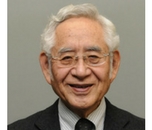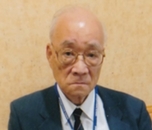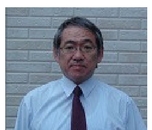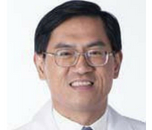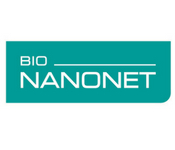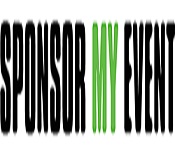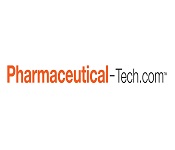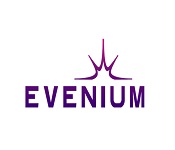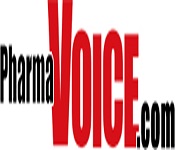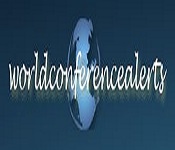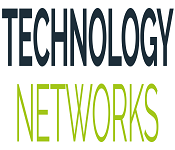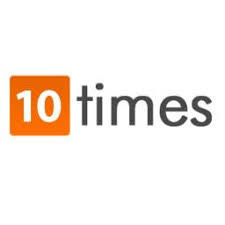Theme: “Challenges and Innovations in Nanomedicine and Drug Delivery Researchâ€
Nano Delivery 2019
Conference Series invites all the participants from all over the world to attend "3rd International Conference and Exhibition on Nanomedicine and Drug Delivery Singapore" (Nano Delivery 2019) during October 16-17, 2019 in Singapore. We cordially welcome all the eminent researchers, students, and delegates to take part in this upcoming event to witness invaluable scientific discussions and contribute to the future innovations in the field of Pharmaceutical Nanomedicine and Nanotechnology.
Conference Series organizes 1000+ Global Events inclusive of 1000+ Conferences, 500+ Upcoming and Previous Symposiums and Workshops in the USA, Europe & Asia with support from 1000 more scientific societies and publishes 700+ Open Access Journals which contains over 50000 eminent personalities, reputed scientists as editorial board members.
- 300+ Participation (70 Industry: 30 Academia)
- 10+ Keynote Speakers
- 50+ Plenary Speakers
- 20+ Exhibitors
- 14 Innovative Educational Sessions
- 5+ Workshops
- B2B Meetings
Target Audience:
- Nano Science and Nano Technology Researchers
- Nano Science and Nano Technology Associations and Societies
- Professors, Associate Professors, Asst. Professors, Scientists
- Graduates and Post Graduates
- Directors, Presidents, CEO's of Organizations/Companies
- Manufacturing Companies
- Noble laureates in Health Care and Medicine
However, the Asia-Pacific region is expected to grow at a faster CAGR owing to the presence of high unmet healthcare needs, research collaborations and increase in nanomedicine Conference research funding in emerging economies such as Singapore, Japan, China, India and other economies in the region. Singapore is expected to surpass the United States in terms of nanotechnology funding in the near future, which indicates the growth offered by this region. This conference seeks to showcase work in the area of Nanomedicine, Drug Delivery Systems, and nanotechnology, Nanobiotechnology, particularly related to drug delivery.
For More PS: https://nanomedicine.pharmaceuticalconferences.com/
Nanomedicine and drug delivery can address one of the greatest challenges in the post-genomic era of the 21st century – making the essential connections between Academics and industry professionals.
To meet these challenges, the field of Nanomedicine and drug delivery has undergone exponential growth during the last 5 years. Technologies such as Personalized Nanomedicine, Design of Nanodrugs, Synthesis of Nanoparticles for Drug Delivery, Regenerative Medicine and Tissue Engineering, Nanomedicines and Biomedical applications, Nanomaterials for drug delivery, Regulatory Aspects Towards Approval of Nanomedicine, NanoPharmaceutical, Industry and Market processing and drug delivery promise to transform the world of Advanced nanomedicines and drug delivery much in the same way that integrated and transformed the world of pharmaceutical sciences.
Nanodelivery 2019 has everything you need:
Open panel discussions: Providing an open forum with experts from academia and business to discuss on current challenges in nanomedicine and drug delivery, where all attendees can interact with the panel followed by a Q&A session.
Speaker and poster presentations: Providing a platform to all academicians and industry professionals to share their research thoughts and findings through a speech or a poster presentation.
Editorial board meeting: Discussing on growth and development of open access Nanomedicine and drugdelivery International Journals and recruiting board members and reviewers who can support the journal.
Round table meetings: Providing a platform where industry professionals meet academic experts.
Over 50+ organizations and international pavilions will be exhibiting at the Nanodelivery 2018 conference and Exhibition. Exhibitors will include equipment manufacturers and suppliers, systems providers, finance and investment firms, R&D companies, project developers, trade associations, and government agencies.
In addition to the products and services you will see at the Nanodelivery Exhibition, you will have access to valuable content, including Keynote Presentations, Product Demonstrations and Educational Sessions from today’s industry leaders.
The Nanodelivery 2019 has everything you need, all under one roof, saving you both time and money. It is the event you cannot afford to miss!
Conference Keywords
- Nanomedicine:
- Nanomedicine : Future Nanomedicine:
- Nanomedicine research group:
- Nanomedicine Market:
- Nanomedicine in Cancer:
- New formulations:
- Emergence of Nanomedicines:
- VLPs:
- Nanocarrier:
- Nanomedicine-History:
- Biomedical nanotechnology:
- Drug delivery systems:
- Toxicity:
- Xenobiotics:
- Pharmaceutical technology:
- Bioimaging:
- Imaging probe:
- Pharmaceutical compound:
- Pulmonary delivery:
- Vascular disease:
- Regenerative medicine- self healing:
- Quantitative Imaging:
- Tissue Sciences:
- Rational drug design:
- Drug target:
- Drug resistance mechanism:
- Single molecule imaging:
- Medicine:
- Computer-Aided Diagnosis:
- Pharmacology:
- Drug delivery industries:
- Drug delivery market:
- Nanomedicine Market Size:
- Biodegradable implants:
- Nanomedicine industry:
- Nanomedicine Market Drivers:
- Nanomedicine Market Forecast:
- FDA approved nanomedicine:
Nanomedicine is the medical application of nanotechnology, nanomedicine ranges from the medical applications of nanomaterials and biological devices to nanoelectronic biosensors and even possible future applications of molecular nanotechnology such as biological machines.
Nanomedicine : Future Nanomedicine:
We can say that nanomedicine is our future medicine. The usage of Nanomedicine in drug delivery can unlock the way to cure many life threatening diseases. For examples nanomedicine in cancer treatment, Nanomedicine for blood disorders , Nanomedicine for Lung Diseases, Nanomedicine for Cardiovascular Diseases. This includes Future aspects of Nanomedicine, nanobots, nanodrugs.
This is only possible by the grace and smart work of the nanomedicine research group from all over the world. Nanomedicine courses are taught in universities all over the world. They also provide postdoctoral fellowship opportunity in nanomedicine. So we can say that future of nanomedicine shines brightly.
Nanomedicine can be explained as the application of nanotechnology to achieve innovation in healthcare.The global nanomedicine market is anticipated to reach USD 350.8 billion by 2025.This includes: Scope of Nanomedicine , Novel Drugs to Nano Drugs, Nanodrugs for Herbal medicines and Cosmetics
A wide range of new tools and possibilities is already achieved in cancer treatments using Nanotechnology, from diagnosing it earlier to improved imaging for targeted therapies. This includes Nanomedicine for another disease, Nanomedicine for Cardiovascular Diseases, Nanodrugs for Cancer Therapy
Nanomedicines are three-dimensional constructs of multiple components with preferred spatial arrangements for their functions. This includes Nano Sized Drugs, Nanodrugs for Veterinary Therapeutics, Nanodrugs for Medical applications, Formulation and Development.
Extensive multidisciplinary investigation in the field of nanomedicine nanotechnology biology and medicine has caused the emergence of Nanomedicine as promising carriers for delivery of diverse therapeutic molecules to the targeted sites. This includes Nanodrugs for Cancer Therapy , Nanodrugs for Veterinary Therapeutics, Nanodrugs for Medical applications.
VLPs are viruses devoid of genetic material and thus they cannot replicate. This includes NanoMedicine in HIV, Drug targeting, Nanomedicine for Cancer.
Nanocarriers are used as a transport module for a drug. Commonly used nanocarriers include micelles, polymers, carbon-based materials, liposomes and many more.This includes nanoparticles, nanobots, nanodrugs.
It was the extensive multidisciplinary investigation in the field of nanomedicine nanotechnology biology and medicine that gave rise to the future medicine i.e. Nanomedicine. We know that nanotechnology is a recent development in scientific research, though the development of its central concepts happened over a longer period of time. This includes Nanomedicine for other disease, Nanodrugs for Herbal medicines and Cosmetics
Biomedical nanotechnology includes a diverse collection of disciplines.This includes Carbon Nanotubes, Biosensors and Nanobioelectronics, Nanobiomechanics and Nanomedicine.
Drug delivery is the formulations, technologies, and systems for transporting a pharmaceutical compound inside the body safely to achieve its desired therapeutic effect.This includes Liposomes , Versatile Polymers In Drug Deivery , Drug Development
Toxicity :
Toxicity is the measure to which a particular mixture of substances can damage an organism.This include Gold Nanoparticles, Silver Nanoparticles , Magnetic Nanoparticles .
A xenobiotic is a chemical substances which is not produced naturally or expected to be found within an organism.This includes Nano Micro Particles , Biosensors and Nanobioelectronics , Bio inspired materials and drug delivery
We can detect diseases at much earlier stages using Nano pharmaceuticals.Using nanoparticles we can also design the diagnostic applications conventionally. This includes Nanoliposome, Drug Targeting, Challenges and advances in NanoPharmaceuticals
Bioimaging are methods that non-invasively visualize biological processes in real time. This includes Image-guided drug delivery, Imaging, Optical sensors
Molecular imaging probe is an agent used to visualize, characterize and quantify biological processes in living systems. This includes Optical sensors, Smart Polymer Nanoparticles, Nanomaterials for Imaging
The particular pharmaceutical product to fit the unique need of a patient can be made by Pharmaceutical compounding .This includes Challenges and advances in Nano Pharmaceuticals, Nano Pharmaceuticals from the bench to Scale up
Pulmonary delivery of drug has become an attractive target and of tremendous scientific and biomedical interest in the health care research .This includes Transmucosal Drug Delivery Systems, Sonophoresis Drug Delivery System, Hydrogel in Drug Delivery
Diseases of the blood Vessels can be related to Vascular diseases. This includes ovarian, breast cancer, kidney disease, fungal infections.
The use of a tissue, engineering and materials methods, and suitable biochemical and physicochemical factors to improve or replace biological tissues. This includes Neuro Regenerations, Organ fabrication, Cell-based therapies
Regenerative medicine is a broad field that includes tissue engineering but also incorporates on self-healing
Regenerative medicine- self healing:
The body uses its own systems, sometimes with help foreign biological material to recreate cells and rebuild tissues and organs. This includes Biologic scaffolds, Bone Marrow Tissue Engineering , Mechanical properties of engineered tissues
Quantitative imaging provides clinicians with a more accurate picture of a disease state. This includes Image-guided drug delivery, Imaging , Optical sensors .
The internal organs and connective structures of vertebrates, and cambium, xylem, and phloem in plants are made up of different types of tissue. This includes Neuro Regenerations, Bioreactor design, Bone Marrow Tissue Engineering.
Drug design, is simply the inventive process of finding new medications based on the knowledge of a biological targetThis includes Nanodrugs for Cancer Therapy, Nanodrugs for Medical applications, Nano Sized Drugs
Biological target can be described as the native protein in the body, with modified activity by a drug resulting in a specific effect. The biological target is often referred to as a drug target. This includes Drug targeting, Image-guided drug delivery , target site
In Drug resistance the effectiveness of a medication is reduced such as an antimicrobial or an antineoplastic in curing a disease or condition. This includes chemotherapy, tumor-targeted drug delivery
Single-molecule studies may be contrasted with measurements on the bulk collection of molecules. In this individual behavior of molecules cannot be distinguished, and only average characteristics can be measured. This includes Drug targeting, Image-guided drug delivery, Imaging
Medicine can be explained as the science and practice of the diagnosis, treatment, and prevention of disease . This includes Controlled radical polymerization, Nanodrugs for Herbal medicines and Cosmetics, Nanomedicine for Gastrointestinal Tract (GI) Diseases.
Computer-aided detection (CADe), are systems that help doctors in the interpretation of medical images.This includes Image-guided drug delivery, Optical sensors, Biosensors and Nanobioelectronics
Pharmacology is the study of drug action, where a drug can be broadly defined as any man-made, natural, or endogenousThis includes Nanoliposome, Drug Targeting, Applied biopharmaceutics
Demand for drug delivery products in the US will rise 6.1 percent yearly to $251 billion in 2019. Parenteral products will grow the fastest, driven by monoclonal antibodies and polymer-encapsulated medicines. Hormones and central nervous system agents will lead gains by the application. Pen injectors and retractable refillable syringes will pace devices. This includes Bio Pharmaceutical Industry, Focus on Nanopharmaceuticals, Industrial Applications of Nano medicine.
The drug delivery market is the largest contributing application segment, whereas biomaterials is the fastest growing application area in this market. Nanomedicine accounts for 77 Marketed Products Worldwide, representing an Industry with an estimated market $130.9 Billion by 2016.This includes Bio Pharmaceutical Industry, Focus on Nanopharmaceuticals, Industrial Applications of Nano medicine.
The global nanomedicine market is anticipated to reach USD 350.8 billion by 2025, according to a new report by Grand View Research, Inc. Development of novel nanotechnology-based drugs and therapies is driven by the need to develop therapies that have fewer side effects and that are more cost-effective than traditional therapies, in particular for cancer. This includes pharmaceutical industry, Up Coming Market for Nanotechnology, Focus on Nanopharmaceuticals.
Biodegradable implants offer a number of financial, psychological, and clinical advantages over permanent metal implants.They provide the appropriate amount of mechanical strength when necessary, and degrade at a rate similar to new tissue formation, thereby transferring the load safely to the healed bone and eliminating the need for an additional revision and removal operation.This includes Biologic scaffolds, Biomaterials, Bone Marrow Tissue Engineering.
Expected developments in nanorobotics owing to the rise in funding from the government organizations is expected to induce potential to the market. Nanorobotics engineering projects that are attempting to target the cancer cells without affecting the surrounding tissues is anticipated to drive progress through to 2025.This includes Industrial Applications of Nano medicine, Nanotechnology tools in Pharmaceutical R&D, Bio Pharmaceutical Industry, Focus on Nanopharmaceuticals
The major drivers of the nanomedicine market include its application in various therapeutic areas, increasing R&D studies about nanorobots in this segment, and significant investments in clinical trials by the government as well as private sector. The Oncology segment is the major therapeutic area for nanomedicine application, which comprised more than 35% of the total market share in 2016. This includes An Up and Coming Market for Nanotechnology, Nanomedicine: Prospects, Risks and Regulatory Issues, Current , Future Applications and Regulatory challenges.
The therapeutic areas for nanomedicine application are Oncology, is includes Current , Future Applications and Regulatory challenges, Regulatory Policies.
When the report provides complete details about the usage and adoption rate of nanomedicines in various therapeutic verticals and regions. With that, key stakeholders can know about the major trends, drivers, investments, vertical player’s initiatives, government initiatives towards the nanomedicine adoption in the upcoming years along with the details of commercial drugs available in the market. This includes Regulation of Nanomedicines, Nanomedicine: Prospects, Risks and Regulatory Issues, Current , Future Applications and Regulatory challenges.
Focusing on critical issues relevant to nanoproduct development and translational activities, it tackles topics such as regulatory science, patent law, FDA law, ethics, personalized medicine, risk analysis, toxicology, nano-characterization and commercialization activities. This includes Industrial Applications of Nano medicine, Nanotechnology tools in Pharmaceutical R&D, Bio Pharmaceutical Industry.
The field of Nano Delivery now has pivotal roles in electronics, biology and medicine. Its application can be appraised, as it involves the materials to be designed at atomic and molecular level. Due to the advantage of their size, nanospheres have been shown to be robust drug delivery systems and may be useful for encapsulating drugs and enabling more precise targeting with a controlled release. In this review specifically, we highlight the recent advances of this technology for medicine and drug delivery systems. Nanomaterials range from 10–200 nm up to a few micrometres in size, and include nano- and microparticles, nanotubes and quantum dots.
Nanotechnological devices are made from metals, polymers, lipids and organic substances as well as from macromolecules such as dendrimers, antibodies, micelles, liposomes and nanofibers. Nanomedicine makes use of these nanostructures for diagnostic or therapeutic applications in all fields of medicine, using them for drug delivery, biosensors, neuro-electronic interfaces, in vivo imaging, and cell-specific molecular interactions, where "cell repair machines" could revolutionize medicine and the medical field. As drug delivery systems, nanoparticles can be designed to improve the pharmacological and therapeutic properties of drugs. The strength of nanoparticulate drug delivery systems is their ability to alter the pharmacokinetics and biodistribution of drugs.
Conference Series LLC Ltd organizes 3000+ Global Events with over 600+ Conferences, 1200+ Symposiums and 1200+ Workshops in USA, Europe & Asia with support from 1000 more scientific societies and publishes 700+ Open access journals which contains over 30000 eminent personalities, reputed scientists as editorial board members.
Track 1: Advanced Nanomedicine
Advanced Nanomedicine seeks to deliver a valuable set of research tools and clinically useful devices. The pharmaceutical industry is developing new commercial applications that may include advanced drug delivery systems, new therapies, and Nanomaterials for Imaging and Drug Delivery. Another active and very much related area of research is the investigation of toxicity and environmental impact of nanoscale materials, since nanomedicines must be biocompatible for clinical application.
Track 2: Design of Nanodrugs
To reach target cell, designing of nanodrugs are major aspects, where researcher interested for developing novel Nanodrugs.
Aimed and specially designed session for researchers developing Nanodrugs for delivery of amino acids, Nucleic acids and proteins. The session Design of Nanodrugs includes: Novel Drugs to Nano Drugs, Nanodrugs for Cancer Therapy, Nanodrugs for Veterinary Therapeutics, Nanodrugs for Medical applications and Nanodrugs for Herbal medicines and Cosmetics.
Track 3: Nanomedicine and Nanotechnology
Nanotechnology for cancer is a field that incorporates the studies related to nanosized particles, their function and behavior with respect to different systems. The tremendous capabilities of nanoparticles have changed the perspective and scope of nanotechnology towards development into an adjuvant field for the remaining fields of life sciences. The role of nanotechnology in the field of pharmaceutics has tremendously changed the way of our understanding about drugs, nanodrugs or the use of nanoparticles as carrier of drug has become the basic fundamental or criteria for the production or design of a drug and advances in nanotechnology.
Nanotechnology is an important field of modern research dealing with design, synthesis, and manipulation of particle structures ranging from approximately 1-100 nm.
The session Design of Nanomedicine and Nanotechnology includes broad topics like: Carbon Nanotubes, Nanoparticles, Gold Nanoparticles, Silver Nanoparticles, Magnetic Nanoparticles, Nano Micro Particles, Nanocomposite Microspheres, Biosensors and Nanobioelectronics, Bio inspired materials and drug delivery and Nanobiomechanics and Nanomedicine.
Track 4: Synthesis of Nanoparticles for Drug Delivery
Nanoparticles (NPs) have wide range of applications in areas such as health care, cosmetics, food and feed, environmental health, mechanics, optics, biomedical sciences, chemical industries, electronics, space industries, drug-gene delivery, energy science, optoelectronics, catalysis, single electron transistors, light emitters, nonlinear optical devices, and photo-electrochemical applications.
Synthesizing nanoparticles for pharmaceutical purposes such as drug preparation can be done in two methods. Bottom up process such as pyrolysis, inert gas condensation, solvothermal reaction, sol-gel fabrication and structured media in which hydrophobic compound such as liposomes are used as bases to mount the drug. Top down process such as attrition / milling in which the drug is chiseled down to form a nanoparticle
Nanocarriers, Gold Nanoparticles, Silver Nanoparticles, Liposomes, ligands, Nanoemulsions , Solid Lipid Nanoparticles, Polymeric Nanoparticles, Dendrimer Nanocarriers, Silica materials and Carbon Nanocarriers, nanotechnology and medicine.
Track 5: Regenerative Medicine and Tissue Engineering
The promise of regenerative medicine is truly remarkable. Regenerative medicine is a new branch of medicine that attempts to change the course of chronic disease, in many instances regenerating failing organ systems lost due to age, disease, damage, or congenital defects. The area is rapidly becoming one of the most promising treatment options for patients suffering from tissue failure.
Tissue Engineering and Regenerative Medicine is appealing to scientists, physicians, and lay people alike: to heal tissue or organ defects that the current medical practice deems difficult or impossible to cure.
It covers numerous topics, such as stem cells, cell culture, polymer synthesis, novel biomaterials, drug delivery, therapeutics, and the creation of tissues and organs.
This session dedicated to helping provide research-based solutions to issues related to human diseases and include with sessions as: tissue engineering, Organ fabrication, Tissue printing, Biomaterials, Biologic scaffolds, Hydrogels, Cell seeded matrices, Bioreactor design, Mechanical conditioning of engineered tissues, Mechanical properties of engineered tissues, Physiological properties of engineered tissues, Clinical outcomes of engineered tissue implantation, Cell-based therapies.
Track 6: Nanomedicine in Theranostics
Theranostic nanomedicine is emerging as a promising therapeutic paradigm. It takes advantage of the high capacity of nanoplatforms to ferry cargo and loads onto them both imaging and therapeutic functions. The resulting nanosystems, capable of diagnosis, drug delivery and monitoring of therapeutic response, are expected to play a significant role in the dawning era of personalized medicine, and much research effort has been devoted toward that goal.
Track 7: Nanomedicines and Biomedical Applications
Nanomedicine seeks to deliver a valuable set of research tools and clinically useful devices. The pharmaceutical industry is developing new commercial applications that may include advanced drug delivery systems, new therapies, and Nanomaterials for Imaging and Drug Delivery. Another active and very much related area of research is the investigation of toxicity and environmental impact of nanoscale materials, since nanomedicines must be biocompatible for clinical application.
Track 8: Drug Delivery Research
Drug Delivery Conferences attains greater global significance as Drug Delivery plays a significant role in the future of pharmaceutical research Novel drug delivery system method by which a drug is delivered can have a significant effect on its efficacy. Conference includes topics like lipid Polymers to enhance drug delivery technology by providing controlled release of therapeutic agents in constant doses over long periods, cyclic dosage, and tunable release of both hydrophilic and hydrophobic drugs. In vitro & in vivo dissolution testing is required to ensure that drug dissolves at a consistent rate from batch to batch of formulated drug product. Improvement of dissolution rate of poorly soluble drugs can be increased by dissolving them in liquid hydrophilic vehicles followed by soaking on highly porous materials. The major part is to deliver an innovative speech on the latest Targeted drug delivery is a method of delivering medication to a patient in a manner that increases the concentration of the medication in some parts of the body relative to others. Pharmacokinetic behavior in drug design and drug development for safety issues arising either as a result of animal toxicity testing or in the clinical program itself
Track 9: Novel Drug Delivery Systems
To maximize knowledge of the current researcher on developing drug delivery systems via Novel techniques for Pharmaceutical formulation development, Drug Delivery conference themed quality topics on Liposomes, Dendrimer, Targeted Drug Delivery design, versatile polymer in Drug Delivery and Controlled Drug Delivery, Trans mucosal Drug Delivery, Blood Brain Barrier, Optimization of pharmaceutical products, Sustained Drug Delivery Systems, are a uniquely architect session to play an important role in the fields of pharmaceutical formulation development and Pharmacology.
Track 10: Smart Drug Delivery Technology
To maximize knowledge of the current researcher on developing drug delivery via Pharmaceutical formulation, Smart Drug Delivery conference themed quality topics on Drug Targeting, Drug Designing, Drug evaluation, Drug Delivery and Therapeutics, Biodegradable polymers, Dendrimer a versatile polymer in drug delivery are a uniquely architect session to play an important role in the fields of nanotechnology, pharmaceutical and medicinal chemistry.
Major drugs driving growth of the overall smart drug delivery market include Angiomax, Copaxone, Forteo, Sandostatin, Velcade, Victoza and Zoladex
Track 11: Nano Pharmaceuticals
Pharmaceutical Nanotechnology for Drug Delivery using Nanotechnology session plays major role in the future of pharmaceutical research. In this session, we will go over several of the most important features of nanotechnology, anticancer drug development , pharmocology of cancer drugs, that will impact our lives but we will also talk about what nanotechnology itself will be like in the future and Investigator specifically from cancer therapy. Interestingly pharmaceutical sciences are using nanoparticles to reduce toxicity and side effects of drugs and up to recently did not realize that carrier systems themselves may impose risks to the patient.
Nano technology session includes drug delivery using nanotechnology, Pharmaceutical technology, Nanoparticles permeability to BBB, Cancer drug targets, Nanoparticles application, Pancreatic Cancer, Nanoliposome-mediated delivery, MicroRNA therapeutics, recent breakthroughs in nanoparticle design to demonstrate their high potential as multifunctional drug delivery nanocarrier, Carriers for nanotechnology, various nanostructures, magnetic nanoparticles. In this review Polymer Nanotechnology for Drug Delivery, Nano composite materials, to deliver highly efficient therapeutic compounds to patient a future aspect of Nanotechnology has a vast future ahead of it and we are constantly making breakthroughs in this industry every day.
Track 12: Biopharmaceutics and Biologic Drugs
Biopharmaceutics is defined as the study of factors influencing the rate and amount of drug that reaches the systemic circulation and the use of this information to optimise the therapeutic efficacy of the drug products. The process of movement of drug from its site of administration to the systemic circulation is called as absorption. The concentration of drug in plasma and hence the onset of action, and the intensity and duration of response depend upon the bioavailability of drug from its dosage form. Bioavailability is defined as the rate and extent (amount) of drug absorption.Biologic Drugs, or biologic response modifiers, are medications genetically engineered from a living organism, such as a virus, gene or protein, to simulate the body’s natural response to infection and disease. Biologics target proteins, cells and pathways responsible for the symptoms and damage of rheumatoid arthritis and other types of inflammatory arthritis. Biologic response modifiers (biologics for short) are drugs that are genetically engineered from a living organism, such as a virus, gene or protein, to simulate the body’s natural response to infection and disease.
Track 13: Nano Biotechnology
Nanobiotechnology is the intersection of nanotechnology and biology. Nanobiotechnology has multitude of potentials for advancing medical science thereby improving health care practices around the world. Nanomedicine is used to treat diseases by gene therapy. Nano biotechnologies are being applied to molecular diagnostics and several technologies are in development.
Track 14: Nano Pharmaceutical Industry and Market
Nano Pharmaceutical Industry Companies and Market session is beginning to change for small, medium, and large scale pharmaceutical Co, biopharmaceutical Manufacturing and Industries , generic drugs companies, contract drug delivery companies which can manifest from development to manufacturing. Addressing these instabilities is a great challenge, because of the complexity of the Clinical bio therapeutics themselves. This session includes Rheological behavior, Pharmaceutical Guidelines, Pharmaceutical companies and regulatory guidelines perspectives, Advances in computational modeling for bioavailability, drug Stability of Pharmaceutical products which are driving crucial research into new vaccines and medicines. The pharmaceutical industry and the public sector are thinking differently than before about how to improve access to medicines and advance research and development for neglected diseases.
Track 15: Regulatory Aspects Towards Approval of Nanomedicine
Nanoethics is the study ethical and social implications of nanotechnology’s. It is an emerging but controversial field. Nanoethics is a debatable field. As the research is increasing on nanomedicine, there are certain regulations to increase their efficacy and address the associated safety issues. Other issues in nanoethics include areas like research ethics, environment, global equity, economics, politics, national security, education, life extension and space exploration.
Conference Highlights
- Advanced Nanomedicine
- Design of Nanodrugs
- Personalized Nanomedicine
- Recent Nanomaterials for drug delivery
- Emerging technologies on Nanomedicine and Nanotechnology
- Synthesis of Nanoparticles for Drug Delivery
- Nanomedicine in Theranostics
- Drug Delivery Research
- Graphene Medicine
- Novel Drug Delivery Systems
- Smart Drug Delivery Technology
- Regenerative Medicine and Tissue Engineering
- Nano Pharmaceuticals
- Biopharmaceutics and Biologic Drugs
- Major challenges in Nano Pharmaceutical Industry and Market
- Regulatory Aspects Towards Approval of Nanomedicine
To share your views and research, please click here to register for the Conference.
To Collaborate Scientific Professionals around the World
| Conference Date | October 16-17, 2019 | ||
| Sponsors & Exhibitors |
|
||
| Speaker Opportunity Closed | |||
| Poster Opportunity Closed | Click Here to View | ||
Useful Links
Special Issues
All accepted abstracts will be published in respective Our International Journals.
- Journal of Nanomedicine & Nanotechnology
- Journal of Pharmaceutics & Drug Delivery Research
- Journal of Pharmaceutical Sciences & Emerging Drugs
Abstracts will be provided with Digital Object Identifier by




